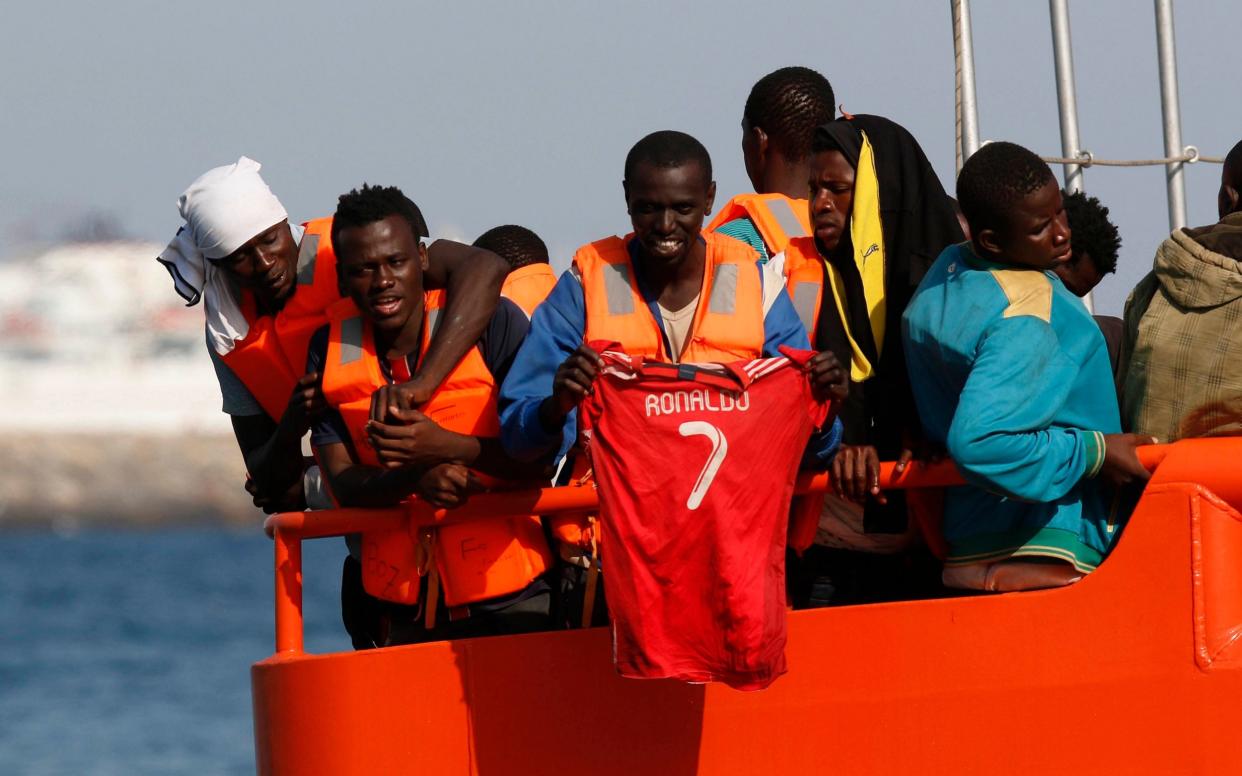Spanish coastguard rescues 600 migrants in 24 hours, amid surge in arrivals via Morocco

Some 600 migrants attempting to cross from Morocco to Spain have been rescued in just 24 hours, amid a surge in arrivals on what has become the fastest growing sea route to Europe.
The Spanish coastguard said that 593 people had been pulled from 15 rafts on Wednesday, 424 of them in the Gibraltar Strait and 169 near Alborán, an island outpost midway between Spain and Morocco.
A further two rafts - one of them containing six children - were picked up in the Gibraltar Strait in the early hours of Thursday morning.
The number of migrants arriving in Spain by sea has tripled this year and the International Organisation for Migration (IOM) last week warned that the country could soon overtake Greece as a maritime gateway to Europe.

Since the start of 2017, more than 8,000 migrants have used the so-called Western Mediterranean Route from Morocco into Spain, compared to 2,500 during the same period last year. The IOM says migrants may be choosing it as a “safe route” amid a crackdown in Libya at the behest of the European Union.
Last Wednesday, sunbathers on a beach near Cadiz were shocked to see a black rubber dinghy loaded with migrants landing on the shore, its occupants quickly leaping from the vessel and running away.

Jose Maraver, head of the Spanish Coastguard centre in Tarifa, told the Telegraph that another boat had come in to a beach the next day, and that such landings were a regular occurrence in the area.
He said that most migrants crossing from Morocco used flimsy, inflatable rafts without engines - “toy boats” which were not fit for the sea, making the challenges for the coastguard “very complicated”.
The Western Mediterranean route has so far proven less deadly than the crossing from Libya to Italy, which remains by far the biggest with almost 100,000 arrivals, and more than 2,000 deaths, since the start of 2017.

But it too has seen tragedies: in July, almost 50 migrants drowned when their rubber boat sank near Alborán. The previous month, the body of a child aged between eight and ten was found on a beach in an Almeria national park.
Spain has also seen a surge in arrivals in Ceuta, its enclave in Morocco, where large groups of migrants regularly try to break through the border fence. These are not included in number of arrivals by sea.

